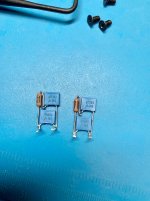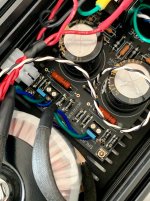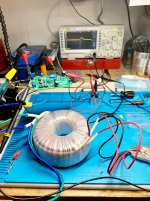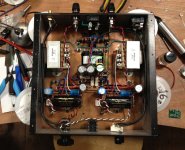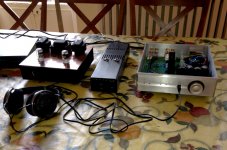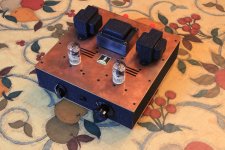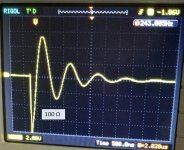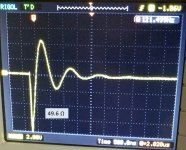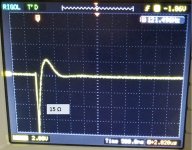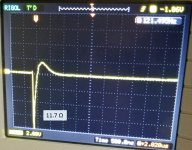Winfried,
My apologies for the delay in responding.
Theoretically I was wondering about each set of secondaries.
The highest voltage secondaries are the main power for the guitar amp itself, for use on the tubes.
The 6.3 secondary would be used for the vacuum tubes heaters.
The 5V secondary would be used for relays.
My apologies for the delay in responding.
Theoretically I was wondering about each set of secondaries.
The highest voltage secondaries are the main power for the guitar amp itself, for use on the tubes.
The 6.3 secondary would be used for the vacuum tubes heaters.
The 5V secondary would be used for relays.
Hi James,
No probs 😉
Others may see this differently.
Greetings,
Winfried
No probs 😉
These Need Snubbers, because audio Supply is to be cleaned from „ringing“....The highest voltage secondaries are the main power for the guitar amp itself, for use on the tubes.
If the heating is AC, no snubber needed bacause of no rectification.The 6.3 secondary would be used for the vacuum tubes heaters.
If no Audio circuit is fed by this, I don‘t see a need for a snubber.The 5V secondary would be used for relays.
Others may see this differently.
Greetings,
Winfried
Winfried,
Thank you for the reply.
Once I get my scope back I will run some tests on all the transformers I have and than select the appropriate rated caps and high wattage resistors.
James
Thank you for the reply.
Once I get my scope back I will run some tests on all the transformers I have and than select the appropriate rated caps and high wattage resistors.
James
Quasimodo and C+RC snubbers can be viewed as an exercise in "Why the hell NOT?" The transformer + rectifiers + wiring MAY ring without the snubber, or they MAY NOT. However the snubber itself is three small, cheap parts, so why the hell not install the snubber and never worry about ringing, ever again. Also: never need to connect scope probes to the internal guts of the audio equipment's power supply while AC mains is turned on.
The same goes for every transformer secondary that connects to a rectifier ("bell ringer"). Why the hell NOT snub that secondary? If it rings, the ringing is magnetically coupled to the transformer core, where it is then coupled to all the other windings. Including the windings that feed the audio amplification circuits. So why the hell not snub that secondary? To save $0.33 worth of parts? Really?
The same goes for every transformer secondary that connects to a rectifier ("bell ringer"). Why the hell NOT snub that secondary? If it rings, the ringing is magnetically coupled to the transformer core, where it is then coupled to all the other windings. Including the windings that feed the audio amplification circuits. So why the hell not snub that secondary? To save $0.33 worth of parts? Really?
Last edited:
Mark,
If your comment above was addressing my question, as I stated; when my scope comes back I will be testing every secondary on all of the transformers I have.
I have three guitar amps I will slowly start to be building. So I completely agree with your statement. I have spent a lot of money on the parts so far so a few extra bucks to have everything the way I want them will not break the bank.
If your comment above was addressing my question, as I stated; when my scope comes back I will be testing every secondary on all of the transformers I have.
I have three guitar amps I will slowly start to be building. So I completely agree with your statement. I have spent a lot of money on the parts so far so a few extra bucks to have everything the way I want them will not break the bank.
Mark,
If your comment above was addressing my question, as I stated; when my scope comes back I will be testing every secondary on all of the transformers I have.
I have three guitar amps I will slowly start to be building. So I completely agree with your statement. I have spent a lot of money on the parts so far so a few extra bucks to have everything the way I want them will not break the bank.
And I was also wondering if anyone had made a snubber for such a high voltage transformer.
I just got around to using my "jig" for the first time the other day for a high voltage supply. For the caps I prefer to use the Panasonic 1600V polypro parts (ECW-H16103JV for the .01uF). Largest value I had on hand for the snubber cap was .047uF, half the recommended 10X value. As a result took a little more resistance to reach critical damping (1.8K). Looks good on the scope. Haven't finished project yet. Proof of the pudding is in the eating. ;~)
Per Marks post above #1784... here's a why not scenario.
Learned from 6L6 that one needs no PCB to snub! Snubber hack-of-beauty on the power supply for the Salas phono pre.
Also a pic of my first snubbing adventure 1am style having just received a scope and built the Quasi jig. That was an epic night of learning adventure!
Thanks Mark!
Learned from 6L6 that one needs no PCB to snub! Snubber hack-of-beauty on the power supply for the Salas phono pre.
Also a pic of my first snubbing adventure 1am style having just received a scope and built the Quasi jig. That was an epic night of learning adventure!
Thanks Mark!
Attachments
Congratulations on your success, Patrick! Your scope photo shows a textbook perfect zeta=1 damping waveform.
When shorting out the other transformer windings, I prefer to twist the wires together and wrap the junction with blue painter's tape instead of using Vise-Grip pliers (!). But hey, if it works then it works. Nice job.
When shorting out the other transformer windings, I prefer to twist the wires together and wrap the junction with blue painter's tape instead of using Vise-Grip pliers (!). But hey, if it works then it works. Nice job.
I received email from a DIYer in Italy. He wants to purchase a PCB + kit of all parts, for either Quasimodo-thruhole or else Cheapomodo. Does anyone have a complete kit they would like to sell and ship to Italy? If so, please PM me and I'll give you the guy's email address.
I've never tried it on speakers, but it's the best headphone amp I have for vocals.
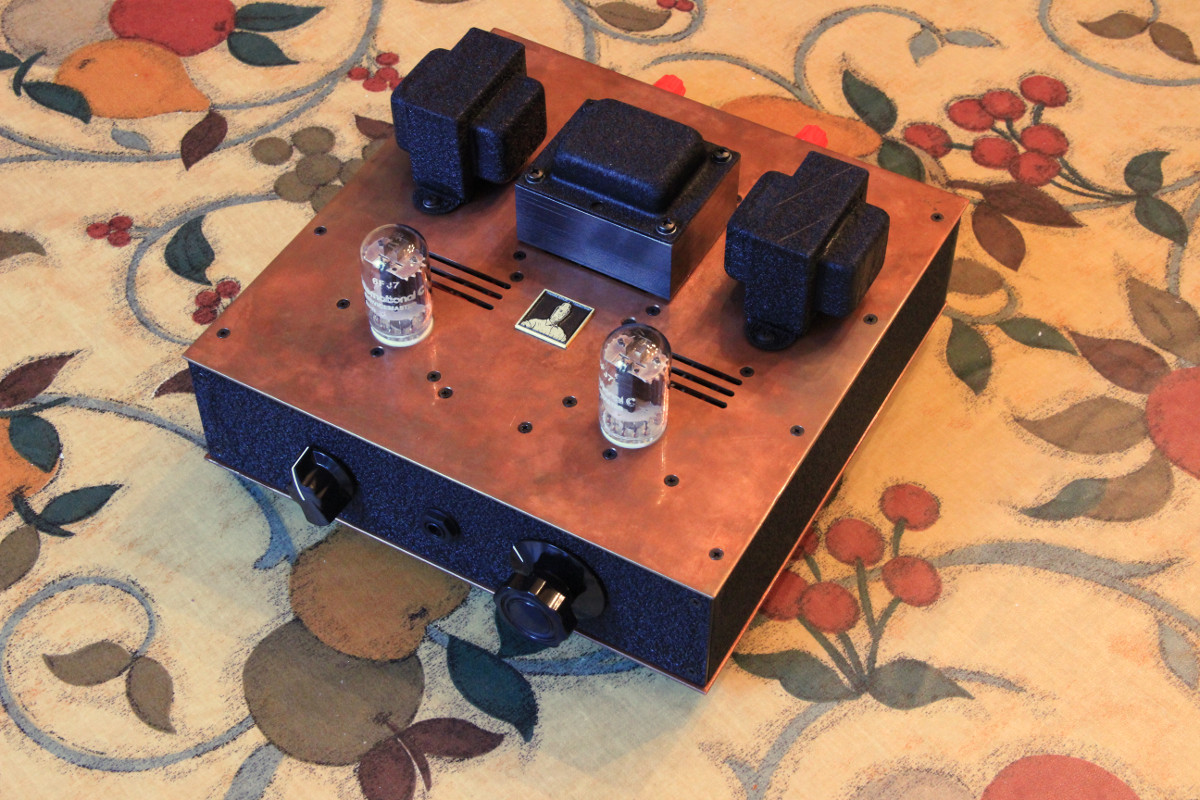
That being said, it's not up to my Torpedo III clone for detail, and it gets absolutely killed by my HPA-1 clone in that department.
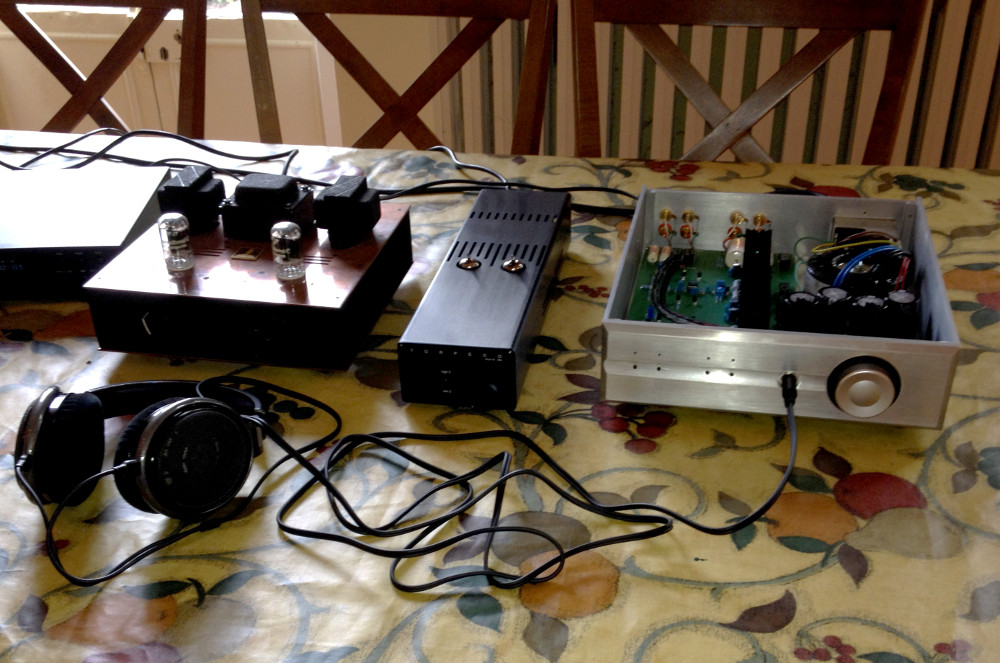
That being said, it's not up to my Torpedo III clone for detail, and it gets absolutely killed by my HPA-1 clone in that department.
Attachments
Yeah, those are HD650s, since given to my niece. I now use LCD-2s when I don't mind bricks on my head, and Ether Flows when I do.
Yeah, those are HD650s, since given to my niece. I now use LCD-2s when I don't mind bricks on my head, and Ether Flows when I do.
I modded a pair of HD650s and they sound very good, if you like the lows pumped a bit. I also have the HD800s, but I;m sensitive to highs and I never liked them much until I plugged them into some tube amps. I haven't heard the LCD or EF. I just don't like cans on my head much. It's okay for a few songs, but anything more than 20mins or so I feel cloistered.
It really is "bricks on the head". I had the HiFiman for a while but can't stand the brick. Sold it and went back to my Sennheiser HD-600 for daily use.Yeah, those are HD650s, since given to my niece. I now use LCD-2s when I don't mind bricks on my head, and Ether Flows when I do.
My favorite headphone is the Superex PEP-79E electrostatic which has a very sweet high end and flat bass without the brick on the head.
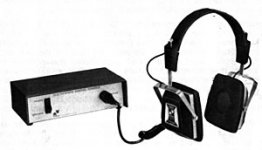
So I am a relative newbie making a first attempt at this snubber testing. The traces here seem to look OK, but the R values are low. This is an R-core transformer from a Hafler XL-280. It has 2 secondaries, both which share a CT. One is a high current secondary which gives rails around +/- 65 VDC, and the other is a low-current secondary which gives rails around +/- 75 VDC.
The photos here are measuring half of the high-current secondary, wired as the bottom example in figure 13 of the Quasimodo document.
Any thoughts?
Thanks,
Ron
The photos here are measuring half of the high-current secondary, wired as the bottom example in figure 13 of the Quasimodo document.
Any thoughts?
Thanks,
Ron
Attachments
- Home
- Amplifiers
- Power Supplies
- Simple, no-math transformer snubber using Quasimodo test-jig
